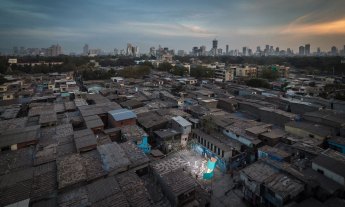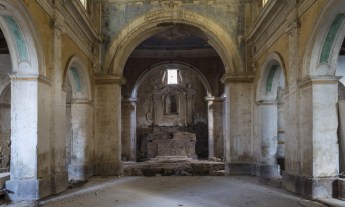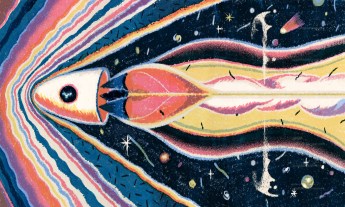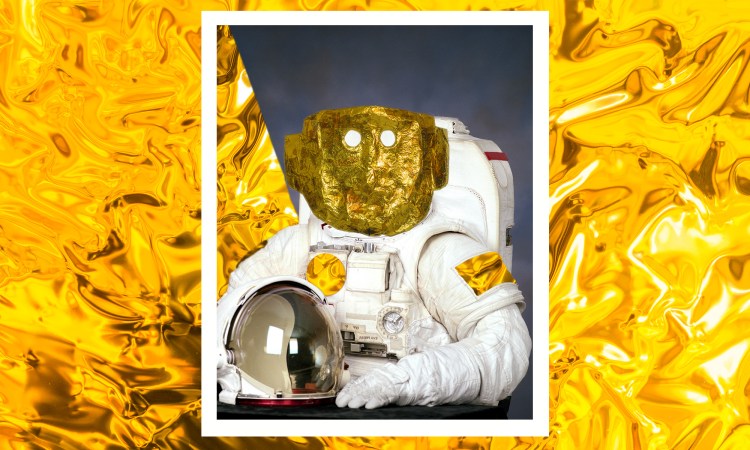
Living on the Moon might just be a chance for humans to learn how to co-exist peacefully and sustainably, proposes Jorge Mañes Rubio, the European Space Agency’s first-ever resident artist. Explore his vision of a new way to settle outer space.
Fifty years ago, we humans took our first steps on the Moon. Back then, many people imagined we’d be living in lunar cities by now, zipping back and forth to Earth and beyond. Fast-forward to 2018, and we’re … not. But it’s still fun to dream about, because the Moon is a place where we might have a chance to start fresh, to build everything from scratch. If and when we do set up homes there, what things — besides the survival basics — will we and should we bring with us? And, what — whether it’s value systems, national differences, attitudes towards occupying new spaces — should we leave behind on Earth?
These are big, brain-tickling questions — and they’re ones that artist and TED Fellow Jorge Mañes Rubio had the opportunity to consider for a full year, as the first-ever artist in residence at the Advanced Concepts Team of the European Space Agency (ESA), based in Noordwijk, the Netherlands. The luminous result of his contemplation and creation: a graceful design for what he calls a temple, a non-religious space where Moon people could gather and celebrate their relationship with their brand-new planet, and each other.
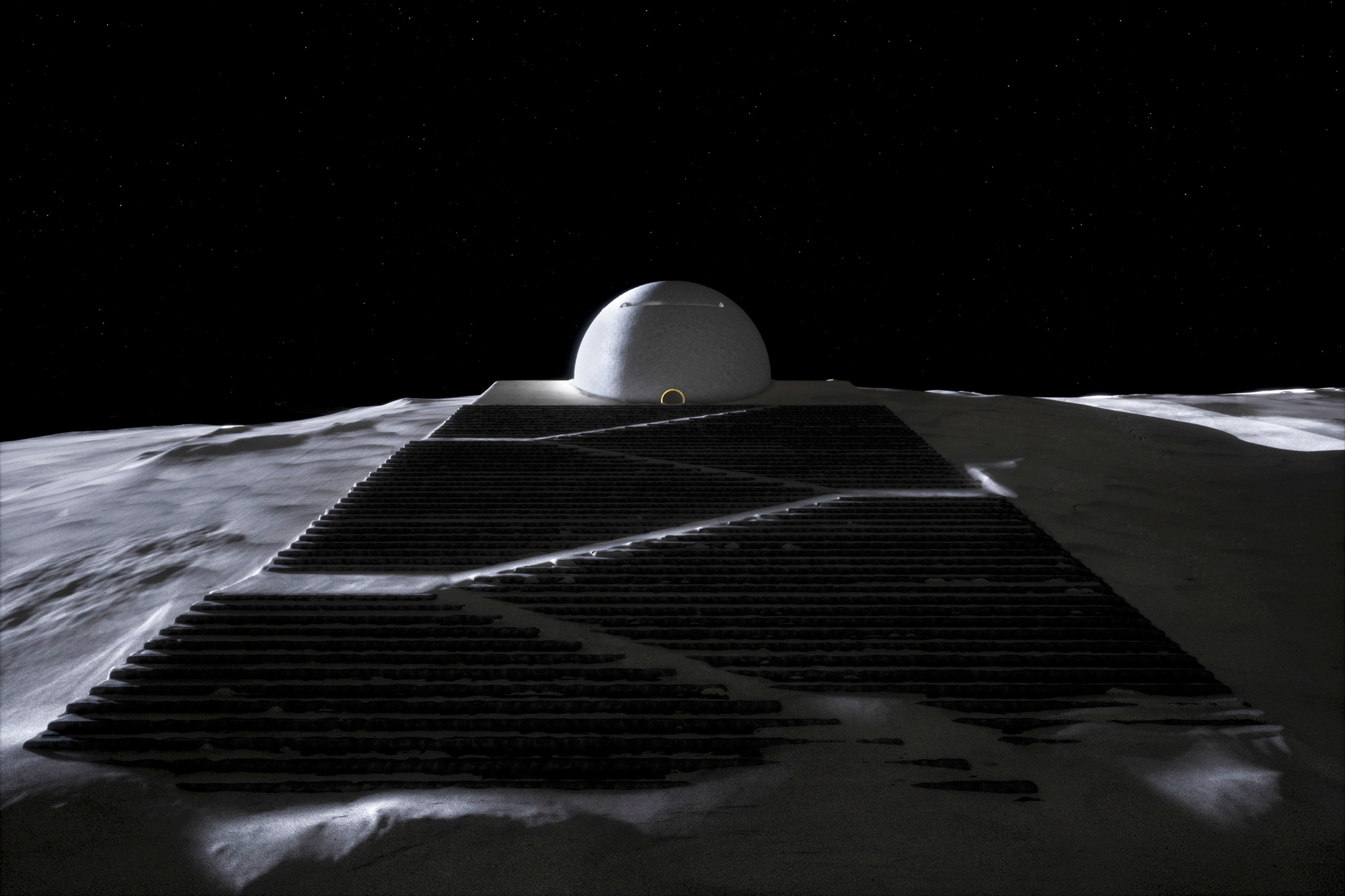
Not long before Mañes Rubio started his residency, ESA director Jan Wörner announced his vision for a Moon Village: a concept for a human lunar colony built on international cooperation. It would welcome all interested nations and people, and support a range of scientific, technological and commercial activities. While this utopian idea was just that, Mañes Rubio adopted it as a way to think about settling the Moon. “I thought, How can we go about colonization in a more sustainable, human and spiritual way than we’ve done before? How can we not perpetuate the same exploitative colonialism — the exploitation of natural resources and unfair distribution of power — that exists to this day?’”
To start thinking about what a temple there would look like, Mañes Rubio studied utopian architecture from the 1960s, when the space race and excitement about it were at their zenith. He also became inspired by the Cenotaph, 18th-century French architect Étienne-Louis Boullée’s monument to Isaac Newton — a massive structure that was never built, in part thanks to engineering restrictions. But its utter unfeasibility led the artist to an exciting realization: “A 500-foot concrete dome without reinforcements or pillars would collapse on this planet, but on the Moon it could stand because there’s almost no gravitational pull,” says Mañes Rubio. “What’s considered utopian on Earth might be possible there.”
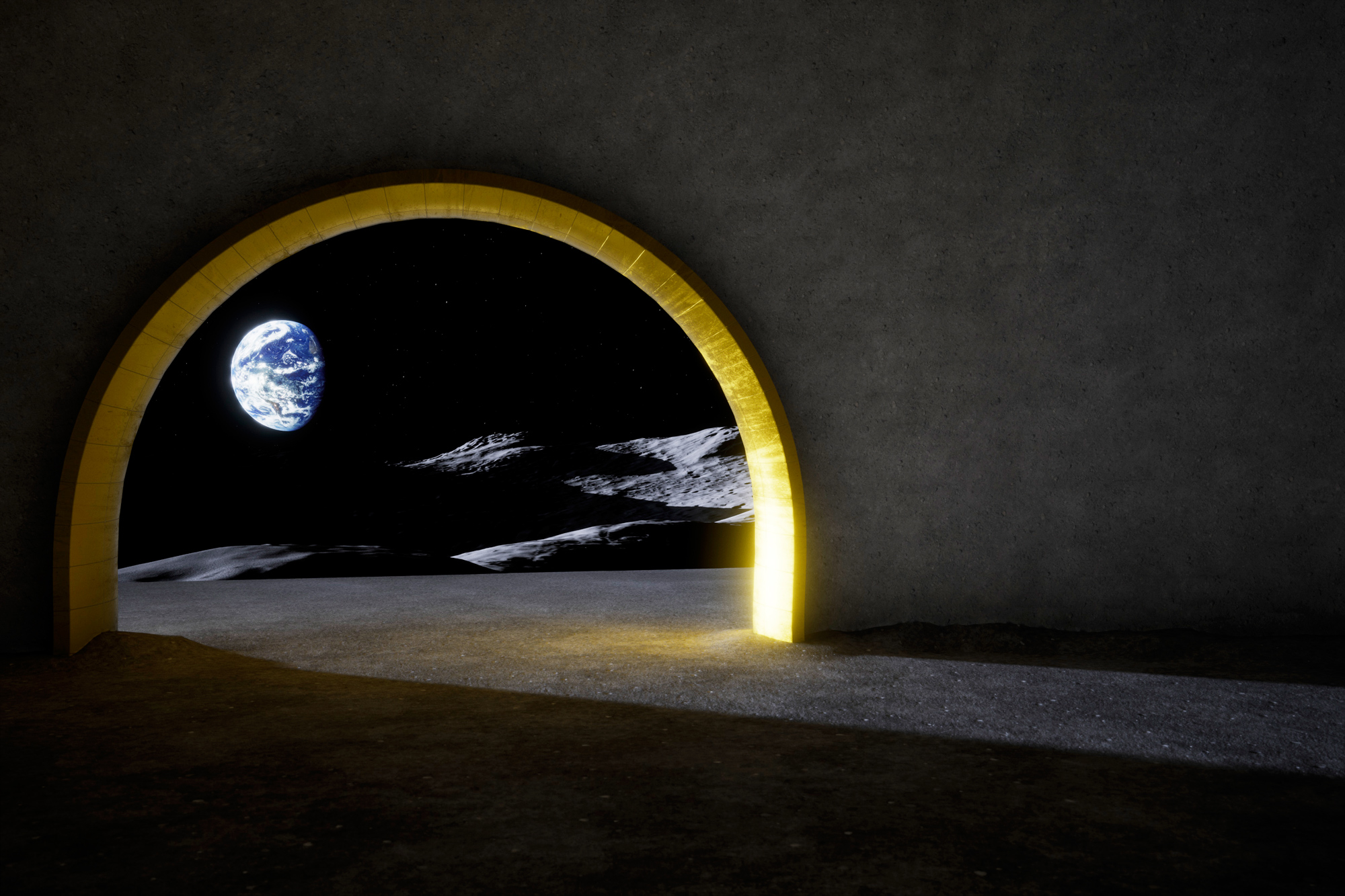
In fact, could this sense of a new possible on the Moon go beyond buildings — and be applied to the arts, politics, philosophy and international cooperation? “All the parameters we use to define what a culture or civilization is could be reworked,” says Mañes Rubio. “We could start from scratch.”
From there, Mañes Rubio thought through the practical aspects of building on the Moon: What would structures be made out of? Because of the expense and difficulty of transporting materials through space, construction would likely rely on the resources at hand. The most abundant substance on the Moon is lunar soil, or regolith, rich in minerals including titanium, anorthite and iron. But what could be done with this dry and rocky dirt? He talked to Laurent Pambaguian, an ESA materials expert. “Laurent and I share an interest in ancient architecture, and our discussions about ancient adobe architecture made me realize — of course! The temple would be adobe made with lunar soil.” On our planet, adobe is created by sun-drying pressed earth with straw and other substances. Mañes Rubio envisioned lunar builders making it by using microwaves to heat the Moon’s soil and mixing it with glues.
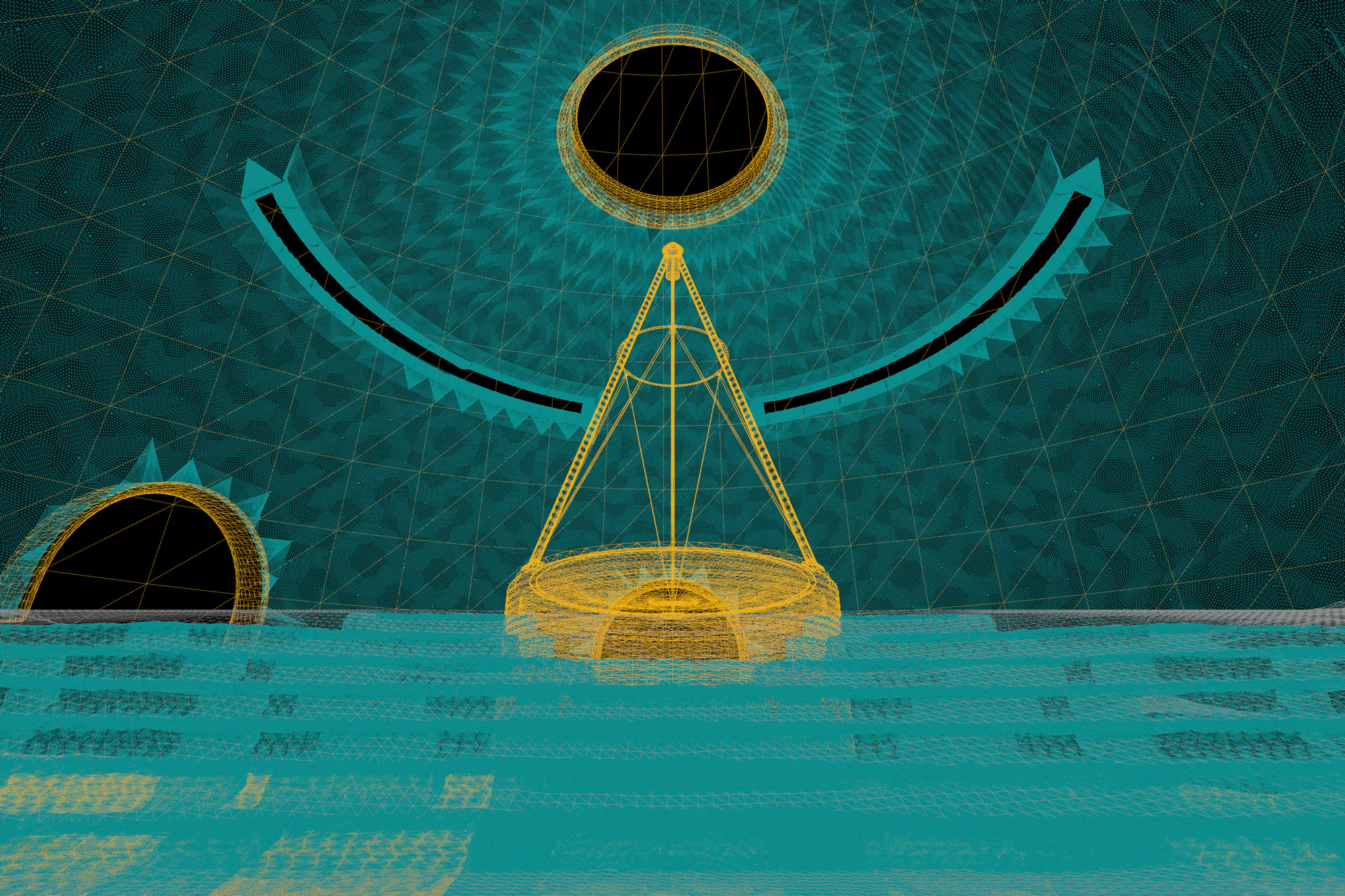
The next practical concern: Where on the Moon would a temple sit? He settled on the south pole “due to the unique distribution of light,” he says. “From there, the sun is permanently on the horizon, so this spot would always be illuminated by sunlight.” Another point in that site’s favor: the nonstop sun would provide power, as well as a stable temperature.
From his colleagues at the ESA, Mañes Rubio knew the south pole’s main feature is the Shackleton Crater. While its 13-mile-wide rim is bathed in perpetual sun, the crater’s depths – it extends nearly two-and-a-half miles down — lie in perpetual darkness. “Because it’s so cold inside the crater, it’s believed there could be water ice,” he says. “If so, we’ve hit the jackpot, as water on the Moon is the number-one priority, making possible hydrogen for fuel and oxygen.” These depths lent an additional spiritual resonance — as a spot of both light and darkness, the crater represents human duality.
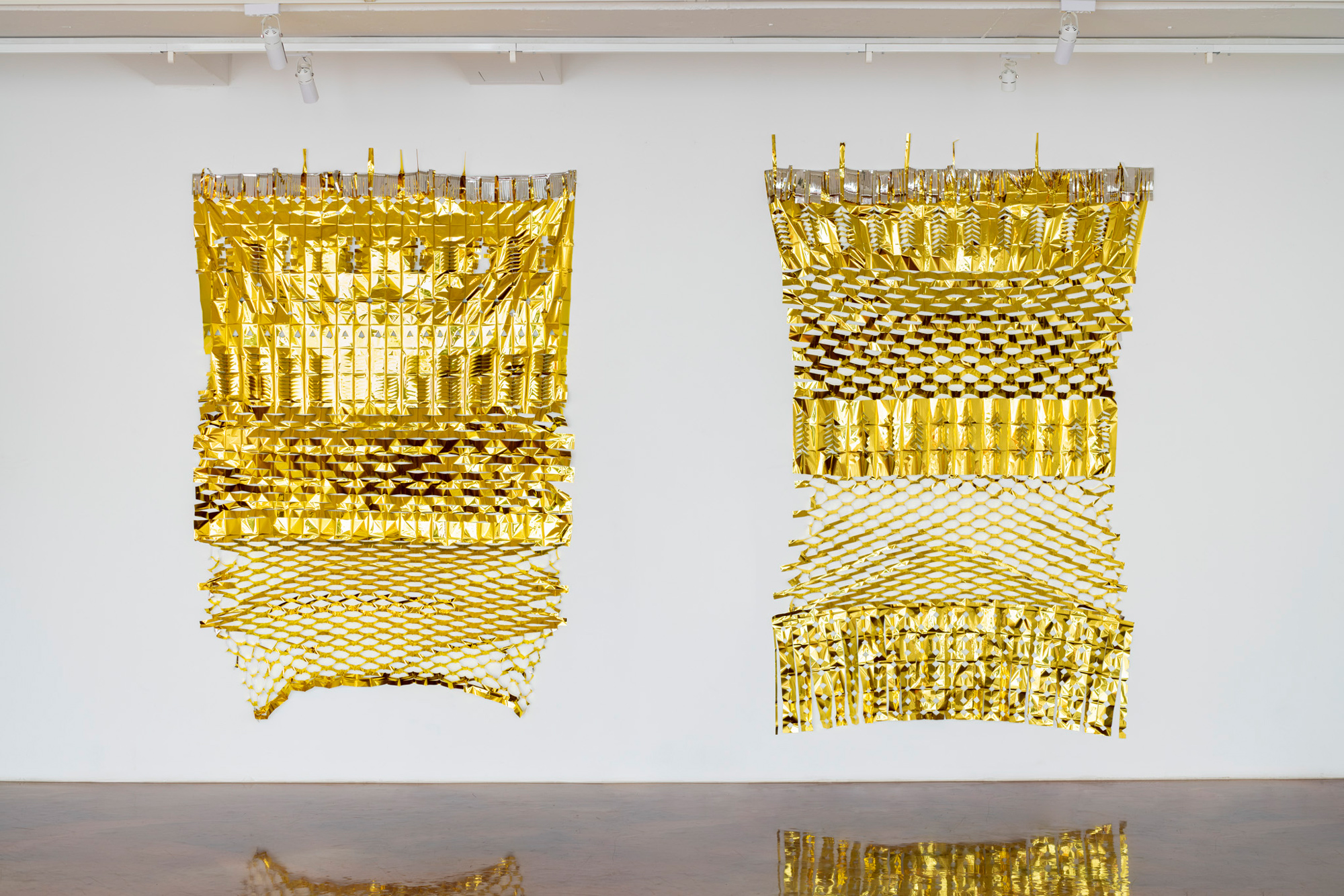
Material and location taken care of, Mañes Rubio raised a final question: What would a temple contain? He envisioned it as a well-used structure, a hub for a future Moon Village and a place for settlers to gather for meaningful time together. So he fabricated symbolic items they’d bring out for their ceremonies. “The objects were inspired by ancient indigenous civilizations, but reimagined through the lens of a future society of humans on the Moon,” he says. “They’re kind of like future anthropological antiquities.”
He crafted them with surplus materials from around the ESA facilities, such as the gold-colored aerospace film, made of vapor-deposited-aluminum, that protects spacecraft and astronauts against cosmic and gamma rays and solar flares, and the simulated lunar soil that the ESA uses to prepare would-be astronauts for the texture of the Moon’s surface. He made objects like funerary masks, headpieces and neckpieces, blankets and vases — to tell the story of a future culture that has evolved in isolation from Earth but is still very much human.
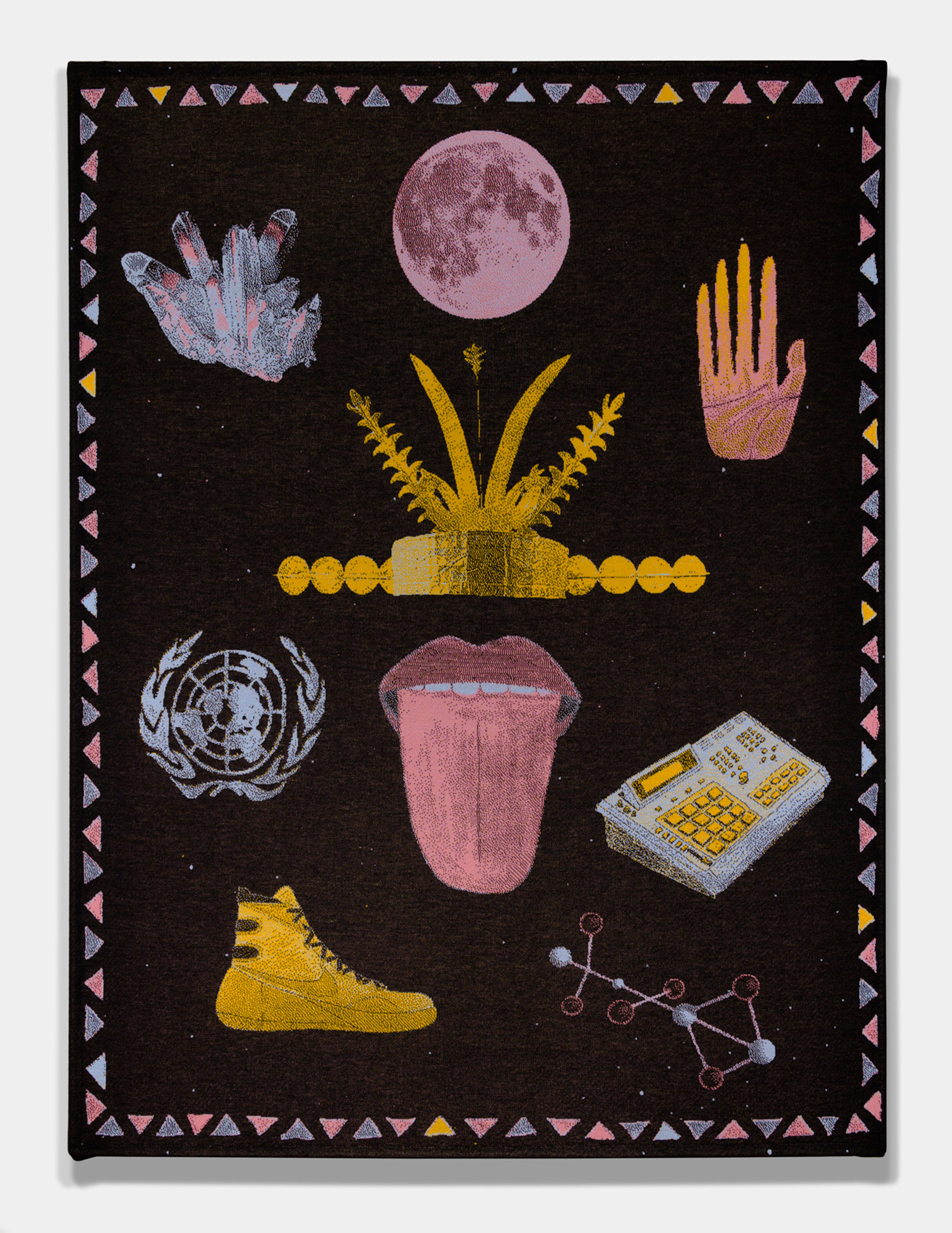
Critics of Mañes Rubio’s Moon temple project have argued that it seemed to simply transport the divisiveness of religion to the Moon. But he explains that his temple is a spiritual – not religious – structure. “The whole point is, we leave concepts of identity, borders and conflict back on Earth and take with us only that which makes us human,” he says. “Going to the Moon may be our best shot to work together toward a common goal in a sustainable and peaceful way, free from political and ideological differences.”
The odds of the temple being built on the lunar surface are about as thin as a handful of Moon dust, admits Mañes Rubio. (The ESA will be displaying a six-foot-long architectural model of the temple at its Noordwijk headquarters, to be unveiled by early 2019.) But his wish is that the project invites the public to start thinking and talking through the issues surrounding space colonization. “Right now, it feels only scientists and billionaires get to be part of the conversation of how or when to explore the Moon, Mars and so on,” says Mañes Rubio. “But we should all take part in considering why and how humanity wants to shape its relationship to these places.”
Watch his TEDxUniversidadEuropeaMadrid talk here:









